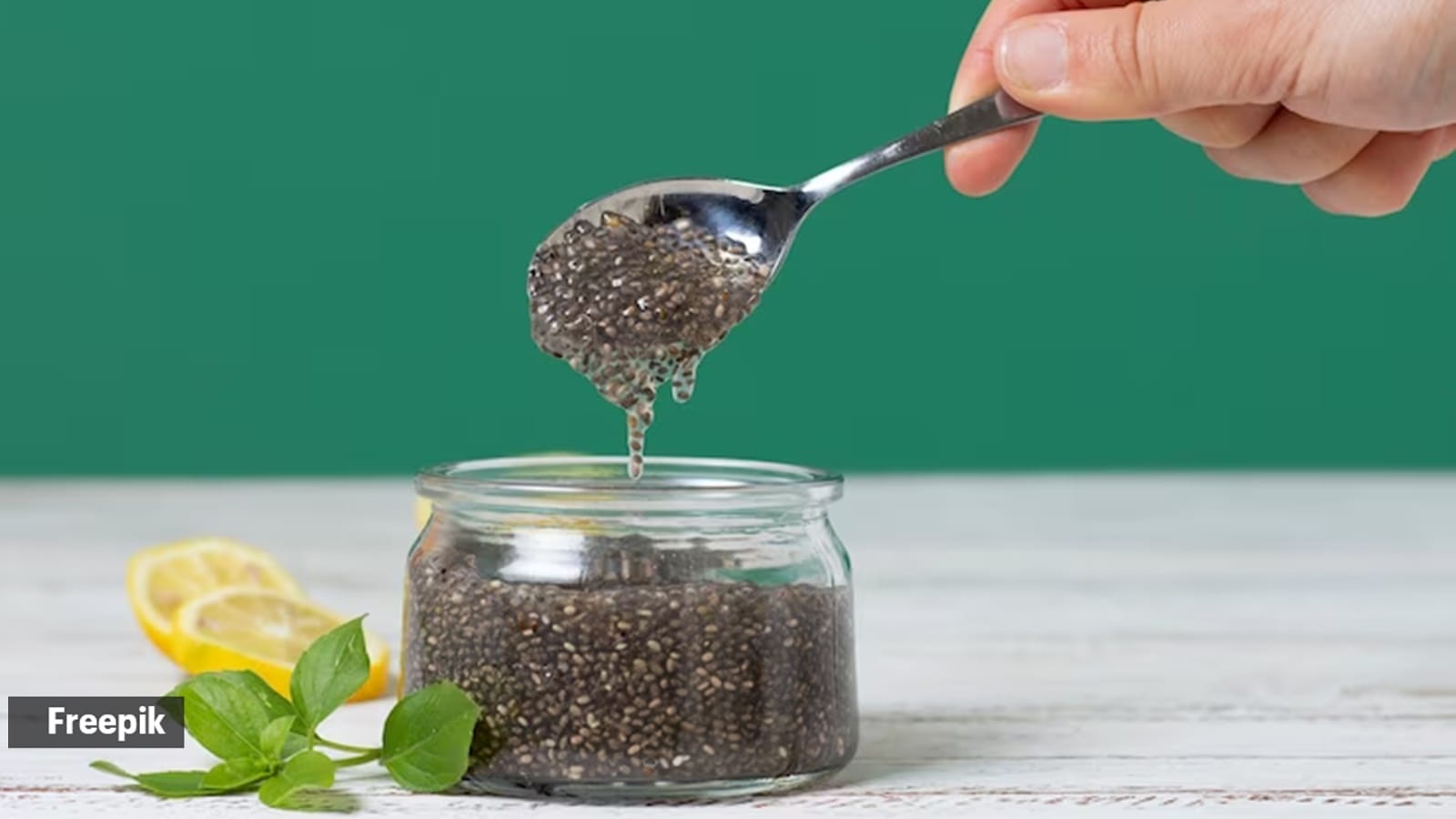📣 For more lifestyle news, click here to join our WhatsApp Channel and also follow us on Instagram
Man ‘couldn’t even keep his saliva down’ after drinking water over dry chia seeds: Here’s why you should be careful too
Chia seeds, derived from the Salvia hispanica plant, are known for their hydrophilic properties due to the soluble fibre content in their outer layer.
 A man experienced a frightening episode when his food pipe became choked after drinking water over dry chia seeds. (Source: Freepik)
A man experienced a frightening episode when his food pipe became choked after drinking water over dry chia seeds. (Source: Freepik)A recent medical incident has brought attention to a seemingly harmless health trend that can potentially turn dangerous.
A man experienced a frightening episode when his food pipe choked after drinking water over dry chia seeds. Content creator Dr Sermed Mezher mentioned this case in an Instagram reel. He said, “The 39-year-old man heard chia seeds were good for his health, and so he ate a tablespoon of them. Shortly after, he had such bad difficulty swallowing that he couldn’t even keep his saliva down and was throwing that up.”
He continued, “When he went to see his doctor, the blockage in his food pipe was so bad that they had to push each of these (chia seeds) down one-by-one with a baby scope, which took hours.”
View this post on Instagram
What happens to chia seeds when they come into contact with water or other liquids?
Dr Pranav Honnavara Srinivasan, consultant Gastroenterology, Fortis, Bengaluru, explained, “Chia seeds, derived from the Salvia hispanica plant, are known for their hydrophilic properties, primarily due to the soluble fibre content in their outer layer. On contact with water or other aqueous solutions, these seeds undergo a rapid imbibement process, absorbing up to 10-12 times their weight in liquid. This phenomenon is facilitated by the presence of mucilage, a complex polysaccharide composed of D-xylose, D-galactose, and 4-O-methyl-D-glucuronic acid residues.”
The mucilage, he said, primarily located in the epidermis of the chia seed, forms a viscous gel upon hydration. This gel-forming capacity is attributed to the interaction of water molecules with the hydrophilic functional groups of the polysaccharide, leading to swelling and increased viscosity. While this property is beneficial in various culinary applications, it can pose potential risks when dry chia seeds are consumed without proper preparation.
Potential risks of consuming dry chia seeds followed by water
According to Dr Srinivasan, ingesting dry chia seeds followed by water can lead to a hazardous situation within the gastrointestinal tract. “The rapid and significant expansion of chia seeds within the oesophagus, due to their hydrophilic nature, can result in esophageal obstruction. This condition can manifest as dysphagia (difficulty in swallowing), odynophagia (painful swallowing), retrosternal pain (chest pain), and in severe cases, respiratory distress, if the airway is compromised.”
Esophageal obstruction by chia seeds necessitates immediate medical attention, he said. Endoscopic intervention is often required to remove the lodged mass, which can cause mucosal injury and potential complications, if not promptly addressed.
 The gel-forming capacity of chia seeds is attributed to the interaction of water molecules with the hydrophilic functional groups of the polysaccharide, leading to swelling and increased viscosity. (Source: Freepik)
The gel-forming capacity of chia seeds is attributed to the interaction of water molecules with the hydrophilic functional groups of the polysaccharide, leading to swelling and increased viscosity. (Source: Freepik)
Precautions or preparation methods to safely consume chia seeds
To mitigate the risks associated with chia seed consumption, Dr Srinivasan suggested adhering to proper preparation methods. “Pre-hydration of chia seeds is paramount. Soaking them in liquid for at least five to ten minutes allows for adequate hydration and gel formation, reducing the potential for rapid expansion within the oesophagus.”
Incorporating chia seeds into food and beverages is another effective strategy. When added to smoothies, yoghurt, oatmeal, or other dishes containing liquid, chia seeds readily form a gel, facilitating safe ingestion and digestion.
Initiating consumption with smaller quantities, such as one teaspoon, and gradually increasing intake allows the gastrointestinal tract to adapt to the fibre content and minimise the risk of adverse events, Dr Srinivasan said. It’s imperative to heed any signs of discomfort or difficulty in swallowing, as these may indicate an adverse reaction or potential obstruction.
📣 For more lifestyle news, click here to join our WhatsApp Channel and also follow us on Instagram



- 01
- 02
- 03
- 04
- 05
























